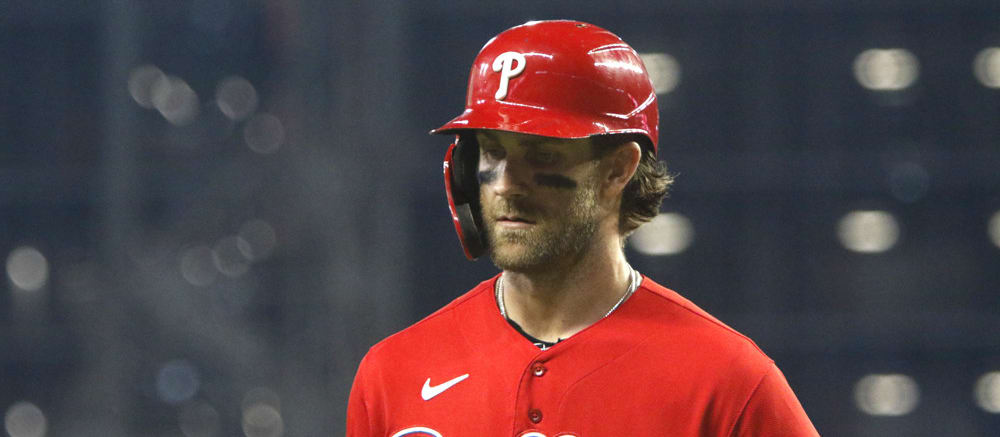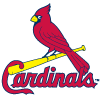I'm s-s-sorrr...
I was wrrro...
Unlike Fonzie, I can say it. I'm sorry, I was wrong. Mea culpa.
Not only did I write about it here, I also gave a presentation for PitchCon (online seminar hosted by the fine folks at Pitcher List that's forever archived on YouTube).
Here is the summary of the The Truth about Exit Velocity
- MaxEV is a much better predictor for power than batting average
- Flyball AEV is even better than MaxEV for gauging power potential
- Hard Groundball AEV slightly influences BABIP, while Soft Groundball AEV has no effect
- Foot speed helps increase Groundball BABIP, but not very much
- Outfield Line Drive AEV matters, but not as much as may be perceived
- A lower Flyball AEV ever so slightly increases the chances of the flyball landing safely
The bullet points in red are wrong, and I'm embarrassed. In brief, the correlation between a better's component average exit velocities and their respective BABIP was very small.
| Type | r |
|---|---|
| Hard Ground Ball | 0.18 |
| Soft Ground Ball | -0.12 |
| Flyball | 0.05 |
| Infield Line Drive | 0.29 |
| Outfield Line Drive | -0.16 |
My lazy interpretation was that exit velocity had little to do with a ball in play. Well, it does. Big time.
The fatal flaw in the above was that even though the overall average exit velocity was broken into components, it's still an average within each, with varying batted balls of that type contributing to the outcomes.
What follows is a more comprehensive breakdown of batted ball data,
I'm s-s-sorrr...
I was wrrro...
Unlike Fonzie, I can say it. I'm sorry, I was wrong. Mea culpa.
Not only did I write about it here, I also gave a presentation for PitchCon (online seminar hosted by the fine folks at Pitcher List that's forever archived on YouTube).
Here is the summary of the The Truth about Exit Velocity
- MaxEV is a much better predictor for power than batting average
- Flyball AEV is even better than MaxEV for gauging power potential
- Hard Groundball AEV slightly influences BABIP, while Soft Groundball AEV has no effect
- Foot speed helps increase Groundball BABIP, but not very much
- Outfield Line Drive AEV matters, but not as much as may be perceived
- A lower Flyball AEV ever so slightly increases the chances of the flyball landing safely
The bullet points in red are wrong, and I'm embarrassed. In brief, the correlation between a better's component average exit velocities and their respective BABIP was very small.
| Type | r |
|---|---|
| Hard Ground Ball | 0.18 |
| Soft Ground Ball | -0.12 |
| Flyball | 0.05 |
| Infield Line Drive | 0.29 |
| Outfield Line Drive | -0.16 |
My lazy interpretation was that exit velocity had little to do with a ball in play. Well, it does. Big time.
The fatal flaw in the above was that even though the overall average exit velocity was broken into components, it's still an average within each, with varying batted balls of that type contributing to the outcomes.
What follows is a more comprehensive breakdown of batted ball data, using the league totals. The average exit velocity will be studied at 5 mph intervals, investigating the batting average (and BABIP for flyballs) at each interval. The number of batted balls struck in each interval will also be presented.
GROUNDBALLS
2021
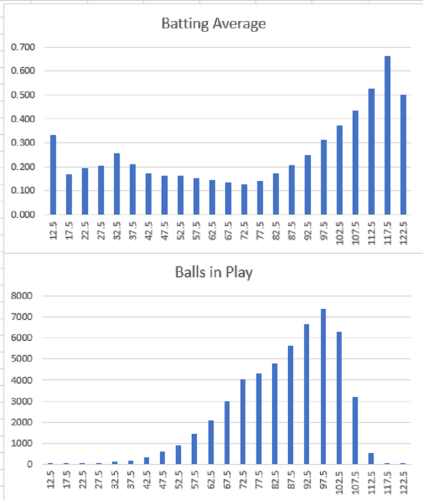
2019
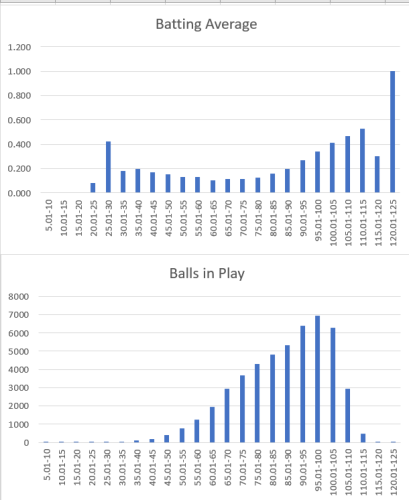
2018
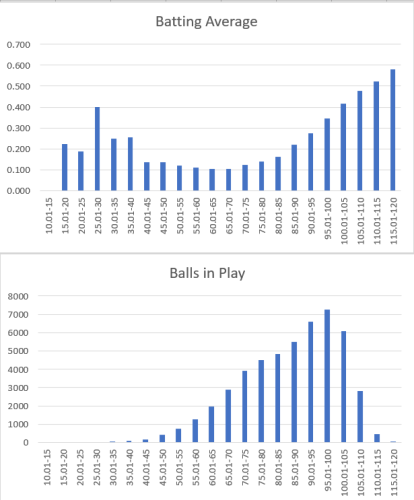
There are slight differences each season, but the general trend is consistent and intuitive. Grounders hit at the upper end of the velocity spectrum indeed have a better chance of becoming hits, while there is a slight uptick in success for the weakly struck groundballs.
The reason the correlation gives the appearance exit velocity is random is the same average exit velocity for two pitchers is derived in different manners, depending on their pitch mix, location and usage. Using 88 mph as an example, some pitchers will yield most of their grounders between 86 and 90 mph while others will have a wider range, say 75 to 100 mph. The latter pitcher is likely to surrender more hits, since they yield more grounders in the range at which the outcomes soar.
OUTFIELD LINE DRIVES
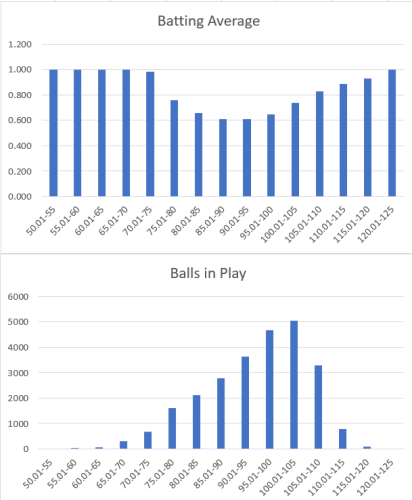
Only 2021 data will be presented since the same trend carries over from 2018 and 2019. Again, the highest exit velocity outfield line drives are almost always hits, while there is batting average increase at the low end from the flares that fall in front of the outfielders. The same principle is true for the line drive exit velocity from two pitchers; the paths to similar averages are different, giving the perception the correlation is close to random.
FLYBALLS
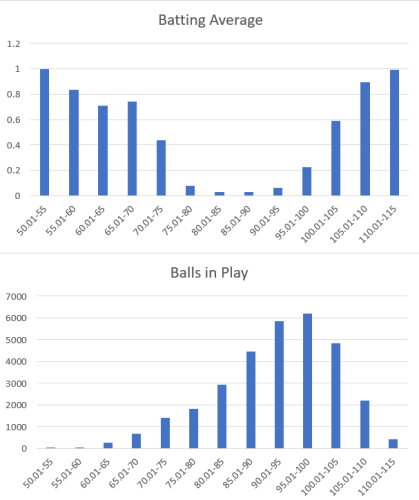
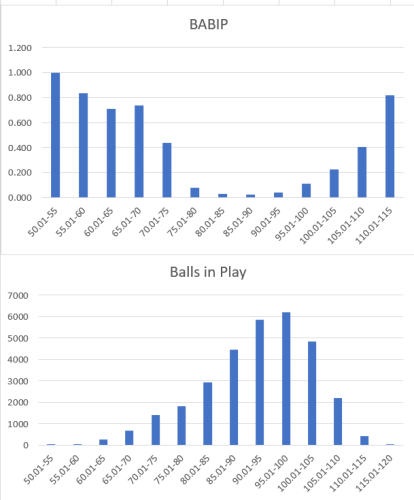
The top graph includes homers, the bottom excludes. The analysis is the same, but since the majority of home runs emanate from the hardest hit flyballs, both were included if only to satisfy curiosity.
Once again, hard hit flyballs have a greater chance of landing safely, but look at the average on softly hit flyballs. Granted, not many are struck, but in combination with the rest, they work to skew the misinterpreted correlation that led to this re-evaluation of my initial conclusion.
So once again, my apologies for doing a half-ass job on the initial study. I should have known to dig deeper to support such a non-intuitive finding. Rest easy, hitting the ball hard is good for hitters and generating soft contact benefits pitchers.


